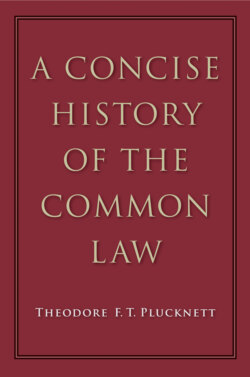Читать книгу A Concise History of the Common Law - Theodore F. T. Plucknett - Страница 72
На сайте Литреса книга снята с продажи.
THE INDUSTRIAL REVOLUTION
ОглавлениеThe transition from this state of things to conditions which are familiar to-day was effected principally in the eighteenth century. Wool-growing had increased enormously and was conducted on a very large scale. This became possible through the great enclosure movements of the sixteenth and eighteenth centuries whereby a great deal of common land, together with land which once had been arable, was turned over to sheep farming. Besides this great change from crop-raising to sheep-rearing (which was the cause incidentally of a great deal of unemployment and agrarian unrest), the textile industry also underwent a great change. The already existing tendency for a number of textile workers to become dependent upon one employer was immensely increased by the introduction of machinery, and here we reach the greatest single cause of the industrial revolution. By means of machinery more work could be done at less expense and with less labour. Soon it became clear that the price also was reduced, and the great movement began whereby trade gathered an ever-increasing momentum. The more there was produced the more the demand increased, and in the end the manufacturers were able to some extent to set the pace of industrial development. The introduction of water power, and very soon afterwards of steam power, gave England a tremendous advantage, for ample supplies of coal were easily accessible. Consequently the industrial revolution pursued a much more rapid course in England than in the rest of Europe.
